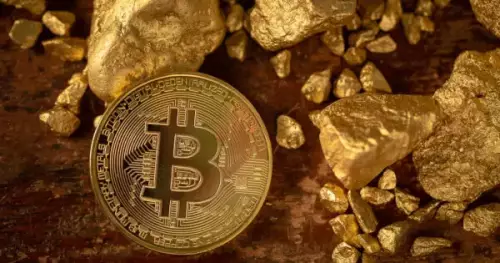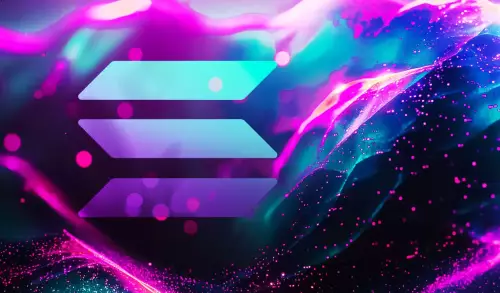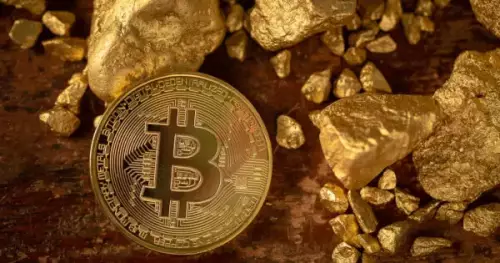 |
|
 |
|
 |
|
 |
|
 |
|
 |
|
 |
|
 |
|
 |
|
 |
|
 |
|
 |
|
 |
|
 |
|
 |
|
从解决复杂的数学难题到驱动一个自我维持的生态系统,加密货币挖矿的内部运作既复杂又令人着迷。其核心在于验证新的加密货币交易并将其添加到区块链中。拥抱加密货币挖矿世界类似于进入哈希率领域,这是一种解决加密难题的竞争性努力。想象一下一个数字矿山,但计算机硬件安装在巨大的数据中心中,在解决决定每个新加密货币区块命运的复杂数学问题迷宫时,它们的活动充满活力。随着挖矿之旅的展开,我们深入研究其复杂性,探索其背后的机制,并揭示塑造市场的最新趋势。加密货币挖矿作为区块链生态系统的支柱,将信任和安全融入数字交易的结构中,证明了数学的力量。
Have you ever been curious about the inner mining work of cryptocurrency? Welcome to the world of crypto mining, a complex system powered by hash rates, a competitive endeavor to solve cryptographic puzzles, and, indeed, a lot of mathematics.
您是否曾经对加密货币的内部挖矿工作感到好奇?欢迎来到加密货币挖矿的世界,这是一个由哈希率驱动的复杂系统,是解决加密难题的竞争性努力,而且实际上还涉及大量数学。
If you’re picturing a conventional mine, it’s time to think again. Although crypto mining might evoke images of the 19th-century gold rush, that’s pretty much where the similarities end. Instead of mining tunnels and picks, imagine crypto mining farms as extensive areas filled with computer hardware housed in data centers.
如果您正在想象一个传统的矿山,那么是时候重新考虑一下了。尽管加密货币挖矿可能会让人想起 19 世纪淘金热的景象,但相似之处也仅此而已。将加密矿场想象成数据中心内充满计算机硬件的广阔区域,而不是采矿隧道和镐。
But what’s the mechanism behind it? Prepare for a quick dive into crypto mining. We’ll guide you through its basics, the process, and the latest trends in the market.
但这背后的机制是什么?准备快速深入加密货币挖矿。我们将指导您了解其基础知识、流程和市场的最新趋势。
Introduction to Crypto Mining
Crypto mining plays a crucial role in validating and appending new cryptocurrency transactions to the blockchain. This involves solving a highly complex mathematical problem. Crypto miners compete to solve this puzzle.
加密货币挖矿简介加密货币挖矿在验证新的加密货币交易并将其添加到区块链方面发挥着至关重要的作用。这涉及解决高度复杂的数学问题。加密货币矿工竞相解决这个难题。
The miner who successfully solves the problem first is rewarded with a portion of the cryptocurrency. After a solution is found, the cycle begins anew. Having more miners increases the potential for profit.
首先成功解决问题的矿工将获得一部分加密货币的奖励。找到解决方案后,循环重新开始。拥有更多的矿工会增加利润的潜力。
This system is ingeniously designed to maintain the blockchain’s security and integrity. Meanwhile, miners are compensated with the very cryptocurrency they help to mine, creating a self-sustaining ecosystem.
该系统的设计巧妙,旨在维护区块链的安全性和完整性。与此同时,矿工们将获得他们帮助开采的加密货币作为补偿,从而创建一个自我维持的生态系统。
Definition And Core Concepts
Cryptocurrency mining is a competitive activity that involves verifying and appending new transactions to a blockchain for cryptocurrencies that adopt the proof-of-work (PoW) or a similar consensus mechanism. Bitcoin and the initial version of Ethereum are prime instances of cryptocurrencies utilizing PoW.
定义和核心概念加密货币挖矿是一项竞争性活动,涉及验证新交易并将其附加到采用工作量证明(PoW)或类似共识机制的加密货币区块链中。比特币和以太坊的初始版本是利用 PoW 的加密货币的主要实例。
Participants in this process are known as “miners.” The successful miner in this contest receives transaction fees and a specified quantity of the cryptocurrency as rewards.
这个过程的参与者被称为“矿工”。在本次比赛中成功的矿工将获得交易费和指定数量的加密货币作为奖励。
Historical Background and Evolution
Since Bitcoin’s introduction in 2009, cryptocurrency has revolutionized traditional financial systems, with mining evolving from a hobby for enthusiasts to a profitable global industry. Bitcoin mining, which generates new coins by validating transactions on the blockchain, relies on the Proof of Work (PoW) consensus algorithm. This requires miners to solve complex cryptographic puzzles to validate transactions and earn bitcoin rewards. The process of verifying transactions is known as “hashing” a block.
历史背景和演变自 2009 年比特币问世以来,加密货币彻底改变了传统金融体系,挖矿从爱好者的爱好发展成为全球盈利的行业。比特币挖矿通过验证区块链上的交易来生成新的硬币,依赖于工作量证明(PoW)共识算法。这需要矿工解决复杂的加密难题来验证交易并赚取比特币奖励。验证交易的过程称为“散列”块。
CPUs
The network’s hash rate, and consequently its security, increases as more powerful mining equipment is added, making it harder for attackers to compromise the system. Over time, advancements in technology have significantly enhanced mining efficiency and profitability. Initially, mining could be done on a regular computer’s CPU, but as the network grew and the mining difficulty increased, miners moved to more powerful hardware, including GPUs, and later to even more specialized equipment like FPGAs and ASICs.
CPU随着更强大的挖矿设备的添加,网络的哈希率及其安全性也会提高,从而使攻击者更难破坏系统。随着时间的推移,技术的进步显着提高了采矿效率和盈利能力。最初,挖矿可以在普通计算机的 CPU 上完成,但随着网络的发展和挖矿难度的增加,矿工转向更强大的硬件,包括 GPU,后来转向更专业的设备,如 FPGA 和 ASIC。
GPUs, FPGAs & ASICs
The transition to GPUs marked a significant evolution, improving efficiency and profitability by allowing for faster mining. Eventually, the advent of ASICs further increased mining competition, making it an activity dominated by large mining pools due to their higher efficiency and lower energy consumption.
GPU、FPGA 和 ASIC 向 GPU 的过渡标志着一次重大演变,通过实现更快的挖矿速度来提高效率和盈利能力。最终,ASIC 的出现进一步加剧了挖矿竞争,由于其更高的效率和更低的能耗,使其成为由大型矿池主导的活动。
Cloud-based Mining
As mining became more competitive and resource-intensive, the cost of mining a single bitcoin soared, making it impractical for individuals without access to large resources. In response, cloud-based mining services emerged, offering users the chance to participate in mining without owning expensive hardware, exemplified by services launched by companies like Binance and other providers. This evolution reflects the continuous growth and increasing complexity of the cryptocurrency mining sector.
基于云的挖矿随着挖矿变得更具竞争力和资源密集型,开采单个比特币的成本飙升,对于无法获得大量资源的个人来说变得不切实际。为此,基于云的挖矿服务应运而生,为用户提供了无需拥有昂贵硬件即可参与挖矿的机会,币安等公司和其他提供商推出的服务就是例证。这种演变反映了加密货币挖矿行业的持续增长和复杂性的增加。
Why Crypto Needs Miners
Cryptocurrency mining is essential for the operation and security of blockchain networks, particularly those using a Proof of Work (PoW) consensus mechanism. Here’s a concise overview of why miners/ Bitcoin miners are crucial:
为什么加密货币需要矿工加密货币挖矿对于区块链网络的运行和安全至关重要,特别是那些使用工作量证明(PoW)共识机制的网络。以下简要概述了为什么矿工/比特币矿工至关重要:
The Role of Miners in the Cryptocurrency Ecosystem
Decentralization
Mining supports the decentralized nature of cryptocurrencies. Distributed across the globe, miners help maintain a system free from central authority control, upholding the blockchain’s integrity.
矿工在加密货币生态系统中的角色去中心化挖矿支持加密货币的去中心化性质。矿工分布在全球各地,帮助维护一个不受中央机构控制的系统,维护区块链的完整性。
Block Creation
Through mining, new blocks are added to the blockchain, recording transactions and generating new cryptocurrency units as rewards for miners. This incentivizes participation and supports the currency’s supply mechanism.
区块创建通过挖矿,新的区块被添加到区块链中,记录交易并生成新的加密货币单位作为矿工的奖励。这激励了参与并支持了货币的供应机制。
Securing the Network and Verifying Transactions
Miners validate transactions, ensuring their legitimacy and preventing issues like double-spending. This process secures the network and builds trust in the cryptocurrency. Miners are key to achieving consensus within the network, agreeing on the valid blockchain version and keeping the system synchronized and secure.
保护网络和验证交易矿工验证交易,确保其合法性并防止双重支出等问题。此过程可保护网络并建立对加密货币的信任。矿工是在网络内达成共识、就有效的区块链版本达成一致并保持系统同步和安全的关键。
The computational work required for mining makes it prohibitively expensive to attack the network, enhancing overall security.
挖矿所需的计算工作使得攻击网络的成本过高,从而增强了整体安全性。
Key Components of Crypto Mining
Crypto mining fundamentally depends on powerful computer equipment and substantial electrical power. Beyond these basics, the process becomes increasingly complex. The technical jargon and intricate nature of cryptocurrency can be daunting for many people, and mining is no exception to this trend.
加密货币挖矿的关键组成部分加密货币挖矿从根本上依赖于强大的计算机设备和大量电力。除了这些基础知识之外,该过程变得越来越复杂。加密货币的技术术语和复杂的性质可能会让许多人望而生畏,挖矿也不例外。

To bridge this gap, we’ve distilled the most prevalent terminology into straightforward language, aiming to turn you into a mining expert quickly.
为了弥补这一差距,我们将最流行的术语提炼成简单的语言,旨在让您快速成为采矿专家。
Mining Hardware: From Basics to Advanced
To engage in mining, investing in a top-tier graphics processing unit (GPU), also known as a video card, for your computer or a specialized mining device known as an application-specific integrated circuit (ASIC) is essential. The price for capable GPUs usually falls between $1,000 and $2,000, while ASICs can be significantly more expensive, reaching into the tens of thousands of dollars.
挖矿硬件:从基础到高级要参与挖矿,请为您的计算机投资顶级图形处理单元 (GPU)(也称为视频卡)或称为专用集成电路 (ASIC) 的专用挖矿设备) 是必不可少的。有能力的 GPU 的价格通常在 1,000 美元到 2,000 美元之间,而 ASIC 的价格可能要贵得多,达到数万美元。
Currently, the majority of Bitcoin’s mining network hashing power is concentrated in ASIC-based mining farms and groups of individual miners working together. The ASICs of today are exponentially more powerful than traditional CPUs or GPUs, continuously improving in hashing power and energy efficiency with each new chip iteration. For a considerable investment exceeding $11,000, it’s possible to mine at a rate of 335 tera hashes per second (TH/s) for just 16.0 joules per terahash (equivalent to 16 watts per trillion hashes). Although there are more budget-friendly options available, the general rule is: the higher the investment, the quicker the hashing rate.
目前,比特币挖矿网络的大部分算力都集中在基于 ASIC 的矿场和一起工作的个体矿工群体中。如今的 ASIC 比传统 CPU 或 GPU 的功能要强大得多,每次新芯片迭代都会不断提高哈希能力和能源效率。对于超过 11,000 美元的大量投资,可以以每秒 335 兆哈希值 (TH/s) 的速度进行挖矿,每兆哈希值仅需 16.0 焦耳(相当于每万亿哈希值 16 瓦)。尽管有更多预算友好的选择,但一般规则是:投资越高,哈希率越快。
The Bitmain Antminer S19 Pro stands out as one of the premier choices for Bitcoin mining work. Despite its higher price point compared to other devices on this list, it boasts an impressive hash rate of 110 terahashes per second (Th/s).
比特大陆蚂蚁矿机 S19 Pro 脱颖而出,成为比特币挖矿工作的首选之一。尽管与此列表中的其他设备相比,其价格较高,但它拥有每秒 110 兆兆哈希 (Th/s) 的令人印象深刻的哈希率。
Understanding Mining Software and Platforms
Cryptocurrency mining software enables the generation of new digital currencies by solving complex mathematical problems and integrating components into an existing blockchain infrastructure. When miners successfully create a new cryptocurrency, it is authenticated and awarded to them as an incentive for their contribution to the blockchain network. Specifically, Bitcoin mining software is tailored for mining Bitcoin (BTC), a leading digital currency, using the computational power of either a computer’s graphics processing unit (GPU) or specialized hardware known as application-specific integrated circuits (ASICs) to carry out the necessary calculations and aid in the discovery of new blocks.
了解挖矿软件和平台加密货币挖矿软件通过解决复杂的数学问题并将组件集成到现有的区块链基础设施中,可以生成新的数字货币。当矿工成功创建一种新的加密货币时,它会被验证并奖励给他们,作为他们对区块链网络贡献的激励。具体来说,比特币挖掘软件专为挖掘比特币(BTC)(一种领先的数字货币)而定制,使用计算机图形处理单元(GPU)或称为专用集成电路(ASIC)的专用硬件的计算能力来执行必要的计算并帮助发现新的区块。
This software is essential for crypto miners to efficiently utilize their computing power, offering compatibility with different algorithms, options for hardware setup, easy-to-navigate interfaces, and support for joining mining pools. Today, the majority of crypto mining operations occur within mining pools, which are collective networks that pool computing resources to increase the chances of earning rewards, which are then distributed among participants. Additionally, some systems allocate the resources of a local server to support these mining pools. Enterprises can leverage these mining tools to create their own cryptocurrency.
该软件对于加密矿工有效利用其计算能力至关重要,它提供与不同算法的兼容性、硬件设置选项、易于导航的界面以及对加入矿池的支持。如今,大多数加密货币挖矿操作都发生在矿池中,矿池是一种集体网络,汇集计算资源以增加获得奖励的机会,然后将奖励分配给参与者。此外,一些系统分配本地服务器的资源来支持这些矿池。企业可以利用这些挖掘工具来创建自己的加密货币。
The Importance of Electricity and Cost Efficiency
The importance of electricity and cost efficiency in cryptocurrency mining cannot be overstated, as these factors are pivotal to the profitability and sustainability of mining operations. Cryptocurrency mining is a process that involves validating transactions and adding them to the blockchain ledger, as well as releasing new coins into circulation. This process requires substantial computational power, which in turn demands a significant amount of electricity. As such, electricity consumption and cost efficiency are central to the economic and environmental aspects of crypto mining.
电力和成本效率的重要性电力和成本效率在加密货币挖矿中的重要性怎么强调都不为过,因为这些因素对于挖矿业务的盈利能力和可持续性至关重要。加密货币挖掘是一个涉及验证交易并将其添加到区块链分类账以及将新硬币释放到流通中的过程。这个过程需要大量的计算能力,进而需要大量的电力。因此,电力消耗和成本效率对于加密货币挖矿的经济和环境方面至关重要。
Variations in energy costs can significantly affect the profitability of cryptocurrency mining operations. Typically, the machinery used in mining is powered by fossil fuels. However, some professional mining firms may operate their own renewable energy sources, such as wind or solar farms, to fuel their operations.
能源成本的变化会显着影响加密货币挖矿业务的盈利能力。通常,采矿中使用的机械由化石燃料提供动力。然而,一些专业采矿公司可能会经营自己的可再生能源,例如风能或太阳能发电场,为其运营提供燃料。
The Mechanics of Mining
Mining is a detailed process, but simply put, it involves recording transactions between wallets into a blockchain block, which includes the addresses and amounts transferred. This block is given specific information and then processed through a cryptographic method known as “hashing.” Hashing transforms all the block’s data into a 64-digit hexadecimal number known as a hash.
挖矿的机制挖矿是一个详细的过程,但简单地说,它涉及将钱包之间的交易记录到区块链块中,其中包括地址和传输的金额。该块被赋予特定信息,然后通过称为“散列”的加密方法进行处理。哈希将块的所有数据转换为 64 位十六进制数,称为哈希。
Explaining the Hash and Proof-of-Work
Here’s an example of a hash:
解释哈希和工作量证明这里是哈希的示例:
0000000000000000057fcc708cf0130d95e27c5819203e9f967ac56e4df598ee
0000000000000000057fcc708cf0130d95e27c5819203e9f967ac56e4df598ee
Notice that the sequence above contains 64 characters, a mix of both digits and letters. This combination might seem unusual at first glance, especially since we’re accustomed to numbers being just digits.
请注意,上面的序列包含 64 个字符,是数字和字母的混合。乍一看,这种组合可能看起来很不寻常,特别是因为我们已经习惯了数字只是数字。
Normally, we operate within the decimal system, which is based on powers of 10, leading to every digit in a number having ten potential values, from zero to nine. For example, in percentages, 1% is equivalent to 0.01, demonstrating the decimal system’s base-10 nature.
通常,我们使用十进制系统,该系统基于 10 的幂,导致数字中的每个数字都有十个潜在值,从零到九。例如,在百分比中,1% 相当于 0.01,展示了十进制系统以 10 为底的性质。
However, the hash mentioned is not in decimal but in hexadecimal format, which is a base-16 system. The term “hexadecimal” comes from “hex,” meaning six in Greek, and “deca,” meaning ten, signifying the 16 unique symbols used in this system. Since our usual numeral system only provides ten symbols (0 through 9), the hexadecimal system extends it by adding the letters A through F to represent values ten through fifteen, allowing for 16 different symbols in total.
然而,提到的哈希值不是十进制的,而是十六进制格式,这是一个以 16 为基数的系统。 “十六进制”一词源自“hex”(希腊语中的“六”)和“deca”(十),表示该系统中使用的 16 个独特符号。由于我们通常的数字系统仅提供十个符号(0 到 9),因此十六进制系统通过添加字母 A 到 F 来扩展它,以表示值 10 到 15,总共允许 16 个不同的符号。
On the other hand, Proof of Work (PoW) is a consensus mechanism used by some blockchain networks to secure transactions and create new blocks. In essence, it requires participants (called miners) to solve complex mathematical puzzles that demand significant computational resources. The first miner to solve the puzzle gets the right to add a new block to the blockchain and is rewarded with cryptocurrency, such as Bitcoin.
另一方面,工作量证明(PoW)是一些区块链网络用来保护交易和创建新区块的共识机制。本质上,它要求参与者(称为矿工)解决需要大量计算资源的复杂数学难题。第一个解决难题的矿工有权向区块链添加新区块,并获得加密货币(例如比特币)奖励。
This process not only validates and records transactions securely but also prevents fraud and double-spending. The difficulty of these puzzles is adjusted dynamically to ensure that the rate of block creation remains steady, despite fluctuations in the network’s computing power. PoW is crucial for maintaining the integrity and trustworthiness of the blockchain, but it’s also criticized for its high energy consumption.
此过程不仅可以安全地验证和记录交易,还可以防止欺诈和双重支出。这些谜题的难度会动态调整,以确保尽管网络计算能力发生波动,区块创建速度仍保持稳定。 PoW对于维护区块链的完整性和可信性至关重要,但也因其高能耗而受到批评。
Target Hash, Nonce, and Mining Difficulty
Miners engage in a process of trial and error to discover a number that falls below a predetermined hash threshold, known as the target hash. This target hash, a hexadecimal figure, is established in such a way as to average out the required attempts.
目标哈希、随机数和挖掘难度矿工通过反复试验的过程来发现低于预定哈希阈值(称为目标哈希)的数字。该目标散列是一个十六进制数字,其建立方式是为了平均所需的尝试。
This trial process involves the incorporation of “nonces” into the data undergoing the hashing procedure. A “nonce” stands for a “number only used once,” serving as the crucial element for producing these 64-bit hexadecimal figures.
该试验过程涉及将“随机数”合并到正在进行散列过程的数据中。 “nonce”代表“仅使用一次的数字”,是生成这些 64 位十六进制数字的关键元素。
Hashing a set of data consistently yields identical results unless alterations occur. Hence, the mining algorithm initially processes the block data with a nonce set to zero. Should this attempt not meet the criteria, the nonce value is incrementally adjusted by one, followed by another hash computation. This cycle persists until a hash value lower than the target hash emerges.
除非发生更改,否则散列一组数据始终会产生相同的结果。因此,挖掘算法最初处理块数据时将随机数设置为零。如果此尝试不满足标准,则随机数值将递增调整 1,然后进行另一次哈希计算。这个循环一直持续到出现低于目标哈希值的哈希值为止。
Mining Difficulty: In the context of cryptocurrencies that adopt the Proof-of-Work (PoW) mechanism for validation, the generation of new units of the currency involves participants, known as “miners,” dedicating their computing resources to cracking intricate mathematical challenges. Specifically, within the Bitcoin ecosystem, these miners’ machines—often referred to as nodes—accumulate individual transaction data into blocks at regular intervals of ten minutes, a duration fixed by Bitcoin’s protocol as the “block time.”
挖矿难度:在采用工作量证明(PoW)机制进行验证的加密货币中,新货币单位的生成需要参与者(称为“矿工”)投入其计算资源来解决复杂的数学挑战。具体来说,在比特币生态系统中,这些矿工的机器(通常称为节点)每隔十分钟将单个交易数据累积到区块中,比特币协议将这一持续时间固定为“区块时间”。
These computers then engage in a competitive effort to be the first to decipher a complex cryptographic puzzle, achieving validation for the newly assembled block to be added to the blockchain.
然后,这些计算机进行竞争,成为第一个破译复杂密码难题的人,从而验证要添加到区块链的新组装的块。
As the popularity of a cryptocurrency such as Bitcoin escalates, the network witnesses an increase in the count of computers contributing to this decentralized verification framework. Consequently, the collective computational strength, or “hash power,” of the network experiences a surge. This increase in participation and computational capacity is mirrored by an adjustment in what is known as the mining difficulty or simply “difficulty.”
随着比特币等加密货币的普及,网络见证了为这种去中心化验证框架做出贡献的计算机数量的增加。因此,网络的集体计算强度或“哈希能力”经历了激增。参与度和计算能力的增加反映在所谓的挖矿难度或简称为“难度”的调整上。
The Bitcoin network is designed to recalibrate its mining difficulty after every 2,016 blocks have been successfully mined. This adjustment, which can be either an increase or decrease, is contingent upon the current scale of the mining network and the cumulative hash power. This ensures the network adapts to changing levels of participation and maintains a consistent block generation time.
比特币网络的设计是在每成功开采 2,016 个区块后重新调整其采矿难度。这种调整可以是增加也可以是减少,取决于当前挖矿网络的规模和累积算力。这确保网络适应不断变化的参与水平并保持一致的块生成时间。
From Mining to Transaction Confirmation
After completing the initial setup, a miner must decide between joining a mining pool or mining solo. The next step involves solving intricate mathematical hash puzzles to authenticate transactions on the Bitcoin blockchain. Let’s explore how miners tackle these hash puzzles and verify transactions:
从挖矿到交易确认完成初始设置后,矿工必须决定是加入矿池还是单独挖矿。下一步涉及解决复杂的数学哈希难题,以验证比特币区块链上的交易。让我们探讨矿工如何解决这些哈希难题并验证交易:
Within the Bitcoin network, each transaction prompts the creation of a cryptographic hash by mining software. This process aggregates transactions into a block using SHA-256 encryption, a one-way function that transforms any length of text into a 256-bit string. This organization of transactions into a Merkle tree, or hash tree, ensures that each leaf node represents the hash of a block, while non-leaf nodes contain the hashes of their respective child nodes.
在比特币网络中,每笔交易都会提示挖矿软件创建加密哈希。此过程使用 SHA-256 加密将交易聚合到一个块中,SHA-256 加密是一种单向函数,可将任意长度的文本转换为 256 位字符串。这种将交易组织成 Merkle 树或哈希树的方式,确保每个叶节点代表一个块的哈希值,而非叶节点包含其各自子节点的哈希值。
Blocks are sequentially linked, forming a chain that references the memory addresses of preceding and subsequent blocks, each holding specific transaction details.
块按顺序链接,形成一条引用先前和后续块的内存地址的链,每个块都保存特定的交易详细信息。
Upon forming the Merkle tree, transaction data is compiled into blocks, each assigned a unique address through the proof-of-work (PoW) algorithm. A block must exhibit PoW to be considered valid, regulating the mining pace and safeguarding block integrity.
在形成默克尔树后,交易数据被编译成块,每个块通过工作量证明(PoW)算法分配一个唯一的地址。区块必须表现出 PoW 才能被视为有效,从而调节挖矿速度并保护区块完整性。
Once transactions are verified, the block is appended to the Bitcoin blockchain, ready for mining. Miners then engage in solving a hash puzzle to authenticate a transaction, competing to identify a specific target hash based on the current mining difficulty.
一旦交易得到验证,该块就会被附加到比特币区块链中,准备进行挖掘。然后,矿工们致力于解决哈希难题来验证交易,并根据当前的挖掘难度竞争识别特定的目标哈希。
This target, a 64-digit hexadecimal number, changes every 2,016 blocks to adjust mining difficulty, ensuring that blocks are mined at a consistent rate of one every ten minutes. The mining difficulty reflects how challenging it is to find a hash below this target value, while the hash rate measures a miner’s computational power in guesses per second.
这个目标是一个 64 位的十六进制数字,每 2,016 个区块就会改变一次,以调整挖矿难度,确保区块以每十分钟一个的一致速率被开采。挖掘难度反映了找到低于该目标值的哈希值的挑战性,而哈希率则衡量矿工每秒猜测的计算能力。
Miners concentrate on appending a numerical sequence to the hashed content of the previous block. A new hash that meets or falls below the target hash is deemed the solution. Other miners and Bitcoin security nodes then validate the block’s accuracy. Once verified, the block joins the official Bitcoin blockchain.
矿工专注于将数字序列附加到前一个块的哈希内容中。满足或低于目标哈希值的新哈希值被视为解决方案。然后其他矿工和比特币安全节点验证该区块的准确性。一旦经过验证,该区块就会加入官方的比特币区块链。
The first miner to solve the puzzle receives the block reward (currently set at 6.25 BTC per block) and earns the right to record the transaction on the blockchain.
第一个解决该难题的矿工将获得区块奖励(目前设置为每个区块 6.25 BTC),并获得在区块链上记录交易的权利。
Types of Mining Explained
Cryptocurrency mining is the backbone of many blockchain networks, enabling transactions to be verified and added to the blockchain ledger. It’s a process where participants, known as miners, use computational power to solve complex mathematical puzzles, thereby validating transactions and securing the network. There are several types of cryptocurrency mining, each with its unique characteristics and requirements.
挖矿类型解释加密货币挖矿是许多区块链网络的支柱,可以验证交易并将其添加到区块链分类账中。在这个过程中,参与者(称为矿工)使用计算能力来解决复杂的数学难题,从而验证交易并保护网络。加密货币挖矿有多种类型,每种都有其独特的特征和要求。
Liquidity Mining and Cloud Mining
Liquidity mining stands as a cornerstone of decentralized finance (DeFi), employing a mechanism where individuals offer portions of their cryptocurrency holdings into diverse liquidity pools. In return, they earn tokens and transaction fees. These participants, termed liquidity providers (LPs), typically acquire an LP token, which can later be redeemed for a share of the platform’s trading fees. The allocation of fees is proportional to the liquidity contributed by each provider.
流动性挖矿和云挖矿流动性挖矿是去中心化金融(DeFi)的基石,它采用一种机制,让个人将其持有的部分加密货币提供给不同的流动性池。作为回报,他们赚取代币和交易费。这些参与者被称为流动性提供者(LP),通常会获得 LP 代币,随后可以将其兑换为平台交易费用的一部分。费用分配与每个提供商贡献的流动性成正比。
On the other hand, Cloud mining utilizes cloud computing resources to generate blockchain-based cryptocurrencies. Cloud computing, a rapidly expanding technology trend, encompasses various computing services like processing power, server capacity, database management, software applications, and file storage, all accessible via the cloud. Companies providing these services typically charge based on usage, akin to paying for utilities such as water or electricity.
另一方面,云挖矿利用云计算资源生成基于区块链的加密货币。云计算是一种快速发展的技术趋势,涵盖各种计算服务,例如处理能力、服务器容量、数据库管理、软件应用程序和文件存储,所有这些都可以通过云访问。提供这些服务的公司通常根据使用情况收费,类似于支付水或电等公用事业费用。
Solo Mining vs. Pool Mining
Solo mining offers autonomy and control over mining operations. Miners work independently, attempting to validate and add blocks to the blockchain on their own. This approach is lauded for its perceived safety and stability. However, solo mining demands significant patience, a substantial investment in hardware, and formidable computational power, particularly as the hash complexities of major cryptocurrencies like ETH, BTC, and Dash continue to rise.
单独采矿与池采矿单独采矿提供了对采矿作业的自主权和控制权。矿工独立工作,尝试自行验证区块并将其添加到区块链中。这种方法因其安全性和稳定性而受到称赞。然而,单独挖矿需要极大的耐心、对硬件的大量投资以及强大的计算能力,特别是在 ETH、BTC 和 Dash 等主要加密货币的哈希复杂性持续上升的情况下。
Pool mining involves miners combining their resources and computational power to increase their chances of earning rewards. Participants contribute their hashing power to a collective pool, with rewards distributed among members based on their contributions. While pool mining diminishes individual rewards as the pool size grows, it offers greater stability and fairness compared to solo mining. Pool mining requires less initial investment but necessitates joining forces with other miners.
矿池挖矿涉及矿工结合他们的资源和计算能力来增加他们获得奖励的机会。参与者将他们的算力贡献给一个集体池,并根据他们的贡献在成员之间分配奖励。虽然随着矿池规模的增长,矿池挖矿会减少个人奖励,但与单独挖矿相比,它提供了更大的稳定性和公平性。矿池挖矿需要较少的初始投资,但需要与其他矿工联手。
Proof of Work vs. Proof of Stake: What’s the Difference?
Proof-of-stake and proof-of-work stand as pivotal consensus mechanisms within the realm of blockchain technology. Each serves to uphold the integrity of transactions, albeit through distinct methodologies, by incentivizing honest behavior and deterring fraudulent activities like double spending.
工作量证明与股权证明:有什么区别?股权证明和工作量证明是区块链技术领域的关键共识机制。尽管采用不同的方法,但每一项都旨在通过激励诚实行为并阻止双重支出等欺诈活动来维护交易的完整性。
To grasp the disparity between proof-of-work and proof-of-stake, a fundamental understanding of mining is essential. In proof-of-work, the verification of cryptocurrency transactions is achieved through mining activities, wherein computational resources are utilized to solve complex mathematical puzzles. Conversely, in proof of stake, validators are selected based on predefined criteria related to the amount of cryptocurrency, or “stake,” they commit to holding in the blockchain. This stake serves as collateral, enhancing the likelihood of being chosen as a validator.
为了掌握工作量证明和权益证明之间的差异,对挖矿有基本的了解是至关重要的。在工作量证明中,加密货币交易的验证是通过挖掘活动来实现的,其中计算资源用于解决复杂的数学难题。相反,在权益证明中,验证者是根据与他们承诺在区块链中持有的加密货币数量或“权益”相关的预定义标准来选择的。该权益作为抵押品,提高了被选为验证者的可能性。
Regardless of the chosen mechanism, the overarching goal remains the same: to maintain decentralization and distribution within the cryptocurrency ecosystem. This decentralization ensures that transactions are openly visible and validated by nodes distributed across the global network of computers, thereby fortifying the security and reliability of the blockchain.
无论选择何种机制,总体目标都是相同的:维持加密货币生态系统内的去中心化和分配。这种去中心化确保交易是公开可见的,并由分布在全球计算机网络上的节点进行验证,从而增强了区块链的安全性和可靠性。
What You Need to Mine Bitcoin
Mining Bitcoin requires specialized equipment, abundant electricity, and a deep understanding of blockchain technology. In this brief overview, we’ll outline the essential components needed to embark on the journey of Bitcoin mining.
开采比特币需要什么 开采比特币需要专门的设备、充足的电力以及对区块链技术的深刻理解。在这篇简短的概述中,我们将概述踏上比特币挖矿之旅所需的基本组件。
Essential Hardware and Software
Large firms and pools control the majority of Bitcoin’s mining power. While it’s technically possible to mine Bitcoin with a personal computer equipped with the latest graphics processing units (GPUs), the chances of earning rewards are extremely slim. Even with a high-end GPU, your mining power would represent a tiny fraction of the network’s total. Joining a mining pool is essential to improve your chances. However, investing in hardware worth thousands of dollars may yield less than 0.001% of the network’s power, making it highly unlikely to recoup your investment due to the sheer competition in generating hashes.
基本硬件和软件大型公司和矿池控制着比特币的大部分挖矿能力。虽然从技术上讲可以使用配备最新图形处理单元(GPU)的个人计算机来挖掘比特币,但获得奖励的机会极其渺茫。即使使用高端 GPU,您的挖矿能力也只占网络总算力的一小部分。加入矿池对于提高您的机会至关重要。然而,投资价值数千美元的硬件可能产生的网络算力不到 0.001%,由于生成哈希值的竞争激烈,收回投资的可能性极小。
To engage in Bitcoin mining, you’ll need to invest in top-tier graphics processing units (GPUs) or application-specific integrated circuits (ASICs). Capable GPUs typically range from $1,000 to $2,000, while ASICs can cost tens of thousands of dollars. The majority of Bitcoin’s mining power now comes from ASIC mining farms and pooled individual miners, as these machines far surpass CPUs and GPUs in efficiency and power. ASICs continue to improve in performance and energy efficiency with each new generation of chips. While entry-level ASICs are available at lower prices, higher investments yield faster hashing speeds.
要参与比特币挖矿,您需要投资顶级图形处理单元 (GPU) 或专用集成电路 (ASIC)。具有功能的 GPU 通常价格在 1,000 美元到 2,000 美元之间,而 ASIC 的价格可能高达数万美元。现在比特币的大部分挖矿能力来自 ASIC 矿场和集合个体矿工,因为这些机器在效率和功率方面远远超过 CPU 和 GPU。随着每一代新一代芯片的出现,ASIC 的性能和能源效率不断提高。虽然入门级 ASIC 的价格较低,但较高的投资会带来更快的哈希速度。
Calculating Potential Profitability
A miner’s revenue from cryptocurrency mining is calculated by the amount of crypto they produce times its market price. For instance, using equipment that mines 1 BTC every 10 days at a BTC market price of $50,000 would result in $50,000 revenue. However, mining income varies with factors like market price, mining difficulty, power costs, and equipment efficiency. Early Bitcoin mining yielded high revenues with basic hardware, but as mining became more complex and competitive, revenue per computing power decreased.
计算潜在盈利能力矿工从加密货币挖矿中获得的收入是通过他们生产的加密货币数量乘以其市场价格来计算的。例如,使用每 10 天开采 1 BTC 的设备,以 50,000 美元的 BTC 市场价格计算,将带来 50,000 美元的收入。然而,挖矿收益因市场价格、挖矿难度、电力成本、设备效率等因素而异。早期的比特币挖矿通过基本硬件产生了高收入,但随着挖矿变得更加复杂和竞争,单位计算能力的收入下降。
Exploring Mining Pools
Mining pools, managed by third-party operators, bring together groups of miners to collaborate. By pooling their resources and distributing rewards among all participants, miners increase their chances of receiving rewards compared to solo mining efforts.
探索矿池由第三方运营商管理的矿池将矿工群体聚集在一起进行协作。与单独挖矿相比,通过集中资源并在所有参与者之间分配奖励,矿工增加了获得奖励的机会。
How Mining Pools Work and Their Benefits
In a mining pool, participants combine processing power to find blocks and share rewards in the form of cryptocurrency. Rewards are distributed based on each participant’s contribution, known as shares. Individual miners provide proof of work through specialized software.
矿池的工作原理及其优势在矿池中,参与者结合处理能力来查找区块并以加密货币的形式分享奖励。奖励是根据每个参与者的贡献(称为份额)分配的。个体矿工通过专门的软件提供工作证明。
Solo mining is seldom profitable due to high resource requirements and low success rates. Mining pools level the playing field by reducing hardware and electricity costs for participants, increasing profitability, and sharing the burden of competition with large-scale mining operations.
由于资源需求高且成功率低,单独挖矿很少盈利。矿池通过降低参与者的硬件和电力成本、提高盈利能力以及分担与大规模挖矿业务的竞争负担来创造公平的竞争环境。
Choosing the Right Mining Pool
Choose Your Equipment: When mining cryptocurrency, ensure your equipment has sufficient power. While most computer systems have a GPU and CPU, GPU and CPU mining may not be as efficient as before due to increased demand. Consider investing in an application-specific integrated circuit (ASIC) or multi-GPU system designed for mining. ASICs offer dedicated mining capabilities and outperform multi-GPU setups.
选择合适的矿池选择您的设备:挖掘加密货币时,确保您的设备有足够的电量。虽然大多数计算机系统都有 GPU 和 CPU,但由于需求增加,GPU 和 CPU 挖矿的效率可能不如以前。考虑投资专为挖矿而设计的专用集成电路 (ASIC) 或多 GPU 系统。 ASIC 提供专用挖矿功能,并且性能优于多 GPU 设置。
Ensure Pool Transparency: Before joining a mining pool, verify its transparency and the integrity of its manager. Check the accuracy of the pool’s hash rate and investigate its reward schemes and payout methods. If you’re uncomfortable with the payment distribution, consider joining a different pool.
确保矿池透明度:在加入矿池之前,请验证其透明度及其管理者的完整性。检查矿池算力的准确性并调查其奖励方案和支付方式。如果您对付款分配感到不舒服,请考虑加入不同的池。
Check Pool Size and Power: A mining pool’s computational power directly influences its coin output over time. Larger pools typically mine faster due to their greater computational capability. However, smaller pools with updated ASIC equipment can compete with larger pools. Ultimately, pools with higher hash rates tend to perform better.
检查矿池大小和算力:随着时间的推移,矿池的计算能力会直接影响其代币产出。由于计算能力更强,较大的矿池通常可以更快地挖掘。然而,配备更新的 ASIC 设备的较小池可以与较大池竞争。最终,哈希率较高的矿池往往表现更好。
Pick Your Pool and Start Mining: After researching, gathering equipment, and selecting a suitable pool, begin mining.
选择你的矿池并开始挖矿:研究、收集设备并选择合适的矿池后,开始挖矿。
The Economics of Crypto Mining
Mining is the process of validating and adding transactions to a blockchain, like Bitcoin. It involves economic factors such as incentives, costs, and its effect on the wider economy. Factors affecting crypto mining economics include crypto prices, mining difficulty, hardware and energy costs, as well as block rewards and transaction fees. This discussion covers the costs, revenues, and market trends of mining.
加密货币挖矿的经济学挖矿是验证交易并将其添加到区块链(如比特币)的过程。它涉及经济因素,例如激励、成本及其对更广泛经济的影响。影响加密货币挖矿经济学的因素包括加密货币价格、挖矿难度、硬件和能源成本,以及区块奖励和交易费用。本讨论涵盖采矿的成本、收入和市场趋势。
Costs vs. Rewards: Is Crypto Mining Profitable?
Is Bitcoin mining profitable? Well, Bitcoin mining’s apparent profitability is intricately linked to its underlying design by Satoshi Nakamoto. As the mining network’s power increases, so does the difficulty of solving the mathematical problem, ensuring a balance. Essentially, more miners mean tougher puzzles. This mechanism stabilizes Bitcoin’s issuance and prevents inflation by regulating the flow of new Bitcoins, aiming for a new block every ten minutes on average.
成本与回报:加密货币挖矿是否有利可图?比特币挖矿是否有利可图?嗯,比特币挖矿的明显盈利能力与其中本聪的底层设计有着错综复杂的联系。随着挖矿网络算力的增加,解决数学问题的难度也随之增加,以确保平衡。本质上,更多的矿工意味着更难的谜题。该机制通过调节新比特币的流量来稳定比特币的发行并防止通货膨胀,目标是平均每十分钟产生一个新区块。
However, achieving profitability isn’t straightforward due to factors such as hash rate, block rewards, mining difficulty, electricity costs, pool fees, and Bitcoin’s market price, all impacting potential earnings.
然而,由于哈希率、区块奖励、挖矿难度、电力成本、矿池费用和比特币市场价格等因素都会影响潜在收益,实现盈利并不容易。
Cryptocurrency mining costs fall into several key areas:
加密货币挖矿成本分为几个关键领域:
- Hardware costs: The investment in specialized equipment like ASICs significantly affects mining profitability.
- Energy expenses: High electricity use for powering computers makes energy costs one of the major expenses, impacting profitability based on local power rates.
- Cooling costs: Managing the heat from mining equipment is essential for maintaining hardware, with costs rising in warmer climates or large operations.
- Maintenance and repair costs: Regular upkeep and repairs are necessary for optimal equipment performance, adding to the overall costs.
- Transaction fees: In addition to block rewards, miners may earn transaction fees for processing transactions, which can vary and affect profitability.
How Long Does It Take to Mine Bitcoin?
In April 2024, the reward for Bitcoin mining is anticipated to decrease by 50% to 3.125 bitcoins every 10 minutes. By 2028, the mining reward will further reduce to 1.5 bitcoins every 10 minutes, and by 2032, the rate will decline to 0.78 Bitcoin for every 10 minutes of mining.
硬件成本:对 ASIC 等专用设备的投资显着影响采矿盈利能力。能源费用:为计算机供电的高耗电量使能源成本成为主要支出之一,影响当地电价的盈利能力。冷却成本:管理采矿设备产生的热量对于维护硬件至关重要,在气候变暖或大型运营中成本会上升。维护和维修成本:定期维护和维修对于优化设备性能是必要的,这会增加总体成本。交易费用:除了区块奖励外,矿工还可以获得收入处理交易的交易费用可能会有所不同并影响盈利能力。 开采比特币需要多长时间? 2024 年 4 月,比特币开采的奖励预计将减少 50% 至每 10 分钟 3.125 个比特币。到2028年,挖矿奖励将进一步降低至每10分钟1.5比特币,到2032年,挖矿奖励将下降至每10分钟0.78比特币。
Factors Affecting Mining Profitability
The connection between Bitcoin mining and its rewards ties closely to the desire for high profits. However, achieving profitability in mining isn’t always straightforward. Therefore, it’s important to evaluate and understand the following factors, which significantly influence mining profitability:
影响挖矿盈利能力的因素比特币挖矿及其奖励之间的联系与对高利润的渴望密切相关。然而,采矿业实现盈利并不总是那么简单。因此,评估和了解以下对挖矿盈利能力有显着影响的因素非常重要:
- Hash rate
- Block rewards
- Mining difficulty
- Costs related to electricity and power consumption
- Fees associated with mining pools
- The market price of Bitcoin
Legal and Ethical Considerations
As the SEC recently approved spot Bitcoin ETF, investors and miners are wondering about the legality of Bitcoin mining. However, as many countries are yet to recognize Bitcoin as a legal thing, the US has no issue with Bitcoin mining.
算力区块奖励挖矿难度与电力和电力消耗相关的成本与矿池相关的费用比特币的市场价格法律和道德考虑随着 SEC 最近批准现货比特币 ETF,投资者和矿工对比特币挖矿的合法性感到好奇。然而,由于许多国家尚未承认比特币为合法事物,因此美国对比特币开采没有任何问题。
Is Bitcoin Mining Legal?
Bitcoin mining is considered legal in numerous places worldwide. Nonetheless, it remains illegal in certain countries, making it crucial to verify the legality of this activity within your own country prior to initiating mining operations.
Environmental Concerns and Ethical Mining
Efforts to reduce the environmental impact of the cryptocurrency sector have intensified, particularly because of its substantial fossil fuel energy consumption. A recent report from the White House highlighted that the worldwide electrical consumption for mining cryptocurrencies ranges between 120 and 240 billion kilowatt-hours annually, surpassing the total energy usage of countries like Argentina or Australia.
环境问题和道德采矿减少加密货币行业对环境影响的努力已经加强,特别是因为其大量的化石燃料能源消耗。白宫最近的一份报告强调,全球每年用于开采加密货币的电力消耗在 120 至 2400 亿千瓦时之间,超过了阿根廷或澳大利亚等国家的能源使用总量。
Since Bitcoin’s inception, its mining process has heavily relied on energy, much of which, for the first decade, took place in China where coal and other fossil fuels are main electricity sources. This significant energy use has drawn attention from environmentalists, with some claims comparing Bitcoin mining’s energy consumption to that of entire countries. However, Bitcoin supporters argue that mining predominantly uses renewable energy, citing studies based on mining pools’ self-reported data. Yet, the credibility of these claims is questioned due to the assumptions made and the lack of transparency in the data.
自比特币诞生以来,其挖矿过程就严重依赖能源,其中大部分在前十年发生在以煤炭和其他化石燃料为主要电力来源的中国。这种大量的能源消耗引起了环保人士的关注,一些人声称将比特币采矿的能源消耗与整个国家的能源消耗进行了比较。然而,比特币支持者认为,挖矿主要使用可再生能源,并引用了基于矿池自我报告数据的研究。然而,由于所做的假设和数据缺乏透明度,这些说法的可信度受到质疑。
Current Trends and Future Predictions
To understand the future, let’s look at the current state of cryptocurrency mining. This industry has matured significantly, transitioning from CPU to GPU, and now to ASIC technology, which is now the norm for mining Bitcoin and other cryptocurrencies because of its powerful efficiency. Despite this maturity, the sector remains marked by relentless innovation and adaptability.
当前趋势和未来预测为了了解未来,让我们看看加密货币挖矿的现状。这个行业已经显着成熟,从 CPU 过渡到 GPU,现在又过渡到 ASIC 技术,由于其强大的效率,该技术现在已成为挖掘比特币和其他加密货币的标准。尽管已经成熟,但该行业仍然以不懈的创新和适应性为标志。
Recent Developments in Crypto Mining
A major evolution in the crypto-mining sector is the trend towards environmentally friendly mining. Historically, the industry faced backlash for its substantial energy use and carbon emissions. Yet, recent years have seen a pivot to more eco-conscious mining methods. Additionally, the introduction of ASIC (Application-Specific Integrated Circuit) mining marked a significant technological leap forward. However, following Ethereum’s Merge event, there’s been a noticeable decrease in the demand for mining hardware.
加密货币挖矿的最新发展加密货币挖矿领域的一个主要发展是环保挖矿的趋势。从历史上看,该行业因其大量的能源消耗和碳排放而面临强烈反对。然而,近年来,人们开始转向更具生态意识的采矿方法。此外,ASIC(专用集成电路)挖矿的引入标志着重大的技术飞跃。然而,在以太坊合并事件之后,对挖矿硬件的需求明显下降。
As Bitcoin recently touched ATH, several on-chain mining metrics have touched their new highs including the mining difficulty.
随着比特币最近触及 ATH,包括挖矿难度在内的几个链上挖矿指标都触及了新高。
The Impact of Cryptocurrency Market Fluctuations
The impact of cryptocurrency market fluctuations on mining deeply affects profitability and operational strategies. High market values can make mining highly rewarding, covering costs and offering substantial profits. However, when the market dips, the rewards may not compensate for the expenses, challenging the viability of mining operations. This volatility demands adaptability from miners and shapes the crypto mining landscape.
加密货币市场波动的影响加密货币市场波动对挖矿的影响深刻影响盈利能力和运营策略。高市场价值可以使采矿业获得高回报,覆盖成本并提供可观的利润。然而,当市场下跌时,回报可能无法弥补支出,从而对挖矿业务的生存能力构成挑战。这种波动性要求矿工具有适应性,并塑造了加密货币挖矿格局。
Future Outlook for Crypto Mining
In September 2021, El Salvador made history by embracing Bitcoin as its official currency. Advances in the Bitcoin protocol and the development of the lightning network are enhancing the speed, security, and convenience of Bitcoin transactions. With the expansion of the Network, the demand for miners, who play a crucial role in maintaining the Bitcoin network, is also growing. This indicates a promising outlook for the future of cryptocurrency mining, which is expected to expand alongside the global adoption of cryptocurrencies.
加密货币挖矿的未来展望 2021 年 9 月,萨尔瓦多将比特币作为其官方货币,创造了历史。比特币协议的进步和闪电网络的发展正在提高比特币交易的速度、安全性和便利性。随着网络的扩展,对在维护比特币网络中发挥着至关重要作用的矿工的需求也在不断增长。这表明加密货币挖矿的未来前景光明,预计随着加密货币的全球采用而扩大。
Furthermore, Bitcoin mining could accelerate the shift towards a sustainable, zero-carbon future by generating employment in the renewable energy sector and supporting the electrical grid in integrating a higher share of renewable energy sources, thereby contributing to the fight against climate change.
此外,比特币挖矿可以通过在可再生能源领域创造就业机会并支持电网整合更高比例的可再生能源,加速向可持续、零碳未来的转变,从而为应对气候变化做出贡献。
Getting Started with Crypto Mining
In the world of cryptocurrencies, mining refers to the process of creating a new block on certain blockchains, where the first miner to crack a cryptographic puzzle earns a cryptocurrency reward. If you’re considering becoming a miner, it’s important to identify which cryptocurrencies are mineable, such as Bitcoin (BTC), Monero (XMR), and Litecoin (LTC). However, mining profitability has decreased due to increased mining difficulty over time and the dominance of large-scale mining operations, which command the majority of a cryptocurrency network’s computational power, measured in calculations per second.
加密货币挖矿入门在加密货币世界中,挖矿是指在某些区块链上创建新区块的过程,第一个破解加密难题的矿工将获得加密货币奖励。如果您正在考虑成为一名矿工,那么确定哪些加密货币是可开采的非常重要,例如比特币 (BTC)、门罗币 (XMR) 和莱特币 (LTC)。然而,由于采矿难度随着时间的推移而增加,以及大规模采矿作业占据主导地位,采矿盈利能力有所下降,大规模采矿作业控制着加密货币网络的大部分计算能力(以每秒计算量衡量)。
How to Begin Mining for Beginners
A mining operation typically consists of three key elements: a cryptocurrency wallet, mining software, and mining hardware.
初学者如何开始挖矿挖矿操作通常由三个关键要素组成:加密货币钱包、挖矿软件和挖矿硬件。
Cryptocurrency Wallet: To hold the digital currency you earn from mining, a wallet is essential. It safeguards your keys—the credentials needed to access your tokens or coins. Wallets come with a unique address for safely sending and receiving funds. There are various wallet types, but for security, “cold storage” wallets, which keep your keys offline, are recommended. Choose the one that suits your mining needs best.
加密货币钱包:为了保存通过挖矿赚取的数字货币,钱包是必不可少的。它可以保护您的密钥——访问您的代币或硬币所需的凭据。钱包带有一个独特的地址,用于安全地发送和接收资金。钱包类型有多种,但为了安全起见,建议使用“冷存储”钱包,它可以使您的密钥离线。选择最适合您的采矿需求的一种。
Mining Software: This software, often free and compatible with multiple operating systems, is crucial for mining. For leading cryptocurrencies like Bitcoin, there’s a variety of software options. Though many are effective, their slight differences might influence the efficiency of your mining activities.
挖矿软件:该软件通常免费且与多个操作系统兼容,对于挖矿至关重要。对于比特币等领先的加密货币,有多种软件选择。尽管许多都是有效的,但它们的细微差别可能会影响您的采矿活动的效率。
Mining Hardware: Likely the costliest part of the setup, mining hardware requires significant computing power, and specialized devices are often preferred for optimal mining performance.
挖矿硬件:挖矿硬件可能是设置中最昂贵的部分,需要强大的计算能力,并且通常首选专用设备来实现最佳挖矿性能。
Tools and Resources for Aspiring Miners
Tools and resources are building or buying a mining rig with a high hash rate that can increase profitability in cryptocurrency mining, though costs rise with performance. ASIC miners, like the Bitmain S19 XP at $4,653 for 141 TH/s or the S21 at $7,000 for 200 TH/s, offer high hash rates but are expensive, with prices climbing above $10,000 for top models like the S21 Hyd with 335 TH/s.
为有抱负的矿工提供的工具和资源工具和资源正在构建或购买具有高哈希率的采矿设备,这可以提高加密货币采矿的盈利能力,尽管成本随着性能的提高而上升。 ASIC 矿机,例如比特大陆 S19 XP(141 TH/s,售价 4,653 美元)或 S21(200 TH/s,售价 7,000 美元),提供高算力,但价格昂贵,顶级型号(如 335 TH/s 的 S21 Hyd)的价格攀升至 10,000 美元以上。 s。
Alternatively, custom-built PCs with powerful graphics cards, such as the Nvidia RTX 4090, can mine cryptocurrencies. However, these setups, even with multiple GPUs, may take years to become profitable because of their lower hash rates compared to ASIC miners and significant initial investments.
或者,具有强大显卡(例如 Nvidia RTX 4090)的定制 PC 也可以挖掘加密货币。然而,这些设置,即使拥有多个 GPU,也可能需要数年时间才能盈利,因为与 ASIC 矿机相比,它们的算力较低,并且初始投资巨大。
For individuals, competing against large mining farms and pools is impractical due to their immense hashing power. Joining a mining pool can offer a more feasible way to participate in mining by pooling resources and sharing rewards. However, this means earning less compared to solo mining with high-capacity rigs.
对于个人来说,与大型矿场和矿池竞争是不切实际的,因为它们拥有巨大的算力。加入矿池可以提供更加可行的参与挖矿的方式,共享资源、共享奖励。然而,与使用高容量矿机进行单独挖矿相比,这意味着收入更少。
What’s the Future of Crypto Mining?
Bitcoin mining is perceived as a lucrative investment opportunity. Yet, it’s important to understand that mining Bitcoin is not a shortcut to wealth. It demands technical expertise and the right equipment to navigate its intricate process. Additionally, substantial investments in high-cost, high-power computing hardware are necessary, alongside access to dependable internet and electricity services.
加密货币挖矿的未来是什么?比特币挖矿被认为是一个利润丰厚的投资机会。然而,重要的是要明白,开采比特币并不是致富的捷径。它需要技术专业知识和正确的设备来驾驭其复杂的流程。此外,还需要对高成本、高功率计算硬件进行大量投资,同时获得可靠的互联网和电力服务。
As the future for crypto mining looks bright, there will be a rise in demand to mine crypto in the coming years. Additionally, the recent regulatory recognition by the SEC, rising institutional interest and booming market sentiment could help the mining sector to expand ahead.
由于加密货币挖矿的前景一片光明,未来几年对加密货币挖矿的需求将会增加。此外,美国证券交易委员会最近的监管认可、机构兴趣的上升和市场情绪的蓬勃发展可能有助于采矿业向前扩张。
免责声明:info@kdj.com
所提供的信息并非交易建议。根据本文提供的信息进行的任何投资,kdj.com不承担任何责任。加密货币具有高波动性,强烈建议您深入研究后,谨慎投资!
如您认为本网站上使用的内容侵犯了您的版权,请立即联系我们(info@kdj.com),我们将及时删除。
-

-

-

-

- 萨克拉曼多咬到未来:食品令牌和加密革命
- 2025-09-13 08:55:00
- 萨克拉曼多的食品令牌正在弥合当地餐馆与加密货币世界之间的鸿沟,使数字货币成为美味的现实。
-

- 硬币,十月增益和AI令牌:加密货币中有什么热?
- 2025-09-13 08:30:00
- 探索硬币,十月增益和AI令牌的最新趋势,重点是XRP,Cardano和Innovative Ozak AI等山寨币。
-

-

- 比特币ETF流:解码GBTC停滞和市场趋势
- 2025-09-13 08:02:40
- 分析最近的比特币ETF流,重点关注GBTC的停顿和更广泛的市场趋势,以了解潜在的交易机会和投资者情绪的转变。
-

-

- 比特币ETF大富翁:方舟和净流入叙述
- 2025-09-13 07:57:40
- 潜入比特币ETF的世界,重点关注方舟的流入和更广泛的市场趋势。这是公牛跑的开始吗?





























































